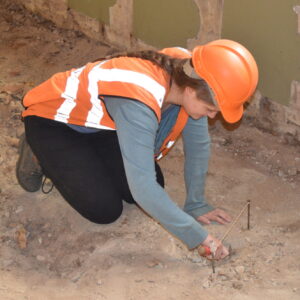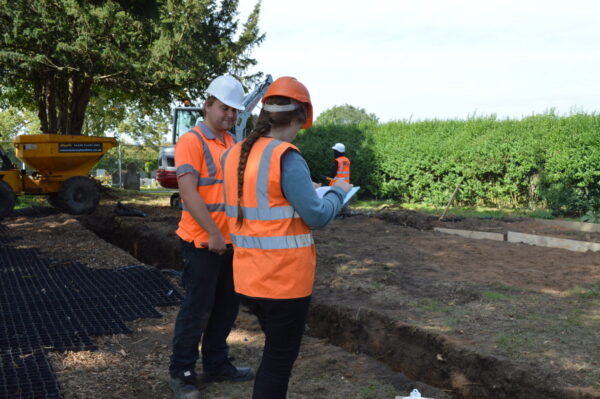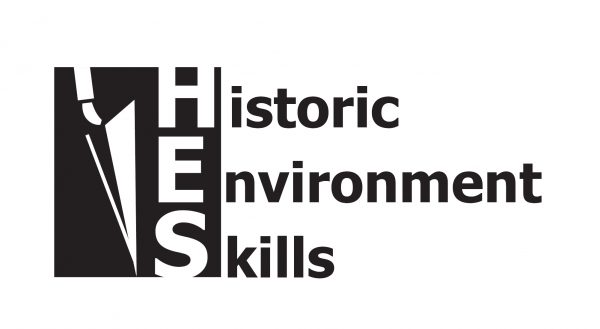–
This piece was written by Maeya Ember, Archaeology Trainee at Archaological Project Services from September 2018 – September 2019
–
The day starts with travelling to the office, where we load any equipment we may need into the van we will be using that day. This includes tools for digging such as mattocks and shovels, as well as materials for recording features (such as graph paper, context sheets and camera equipment). We also bring our own personal equipment, such as trowels, string lines and line levels.
We then travel to whichever site we have been assigned to work on that day.

When we get to site we each start work on a different feature. This first involves hoeing back the soil to see what it looks like. After this a string line is set up to mark out the place that will be excavated.
The feature is usually excavated using a shovel and trowel, though a mattock is also used if the ground is hard to dig up. A hand shovel may also be used to remove loose soil if the feature is too small for a regular shovel.
After the feature has been excavated, a trowel is used to straighten out the sides and clean up any loose soil. The section (side of the feature) is then photographed and given context numbers for filling out context sheets (one for the cut, then one for each layer of soil), a section number for drawing the section, and a plan number for drawing a plan if necessary (a plan is a drawing of the top of a feature).

The section is then drawn, and context sheets are written out describing its shape and soil. If the feature is isolated (not part of a linear), a plan of the feature should also be drawn.
This is repeated throughout the day, and any finds uncovered are put into a bag, labelled with the site code and context number of the soil layer it was found in.
At 4 pm we go back to the office to find out which site we will be working on the next day.

